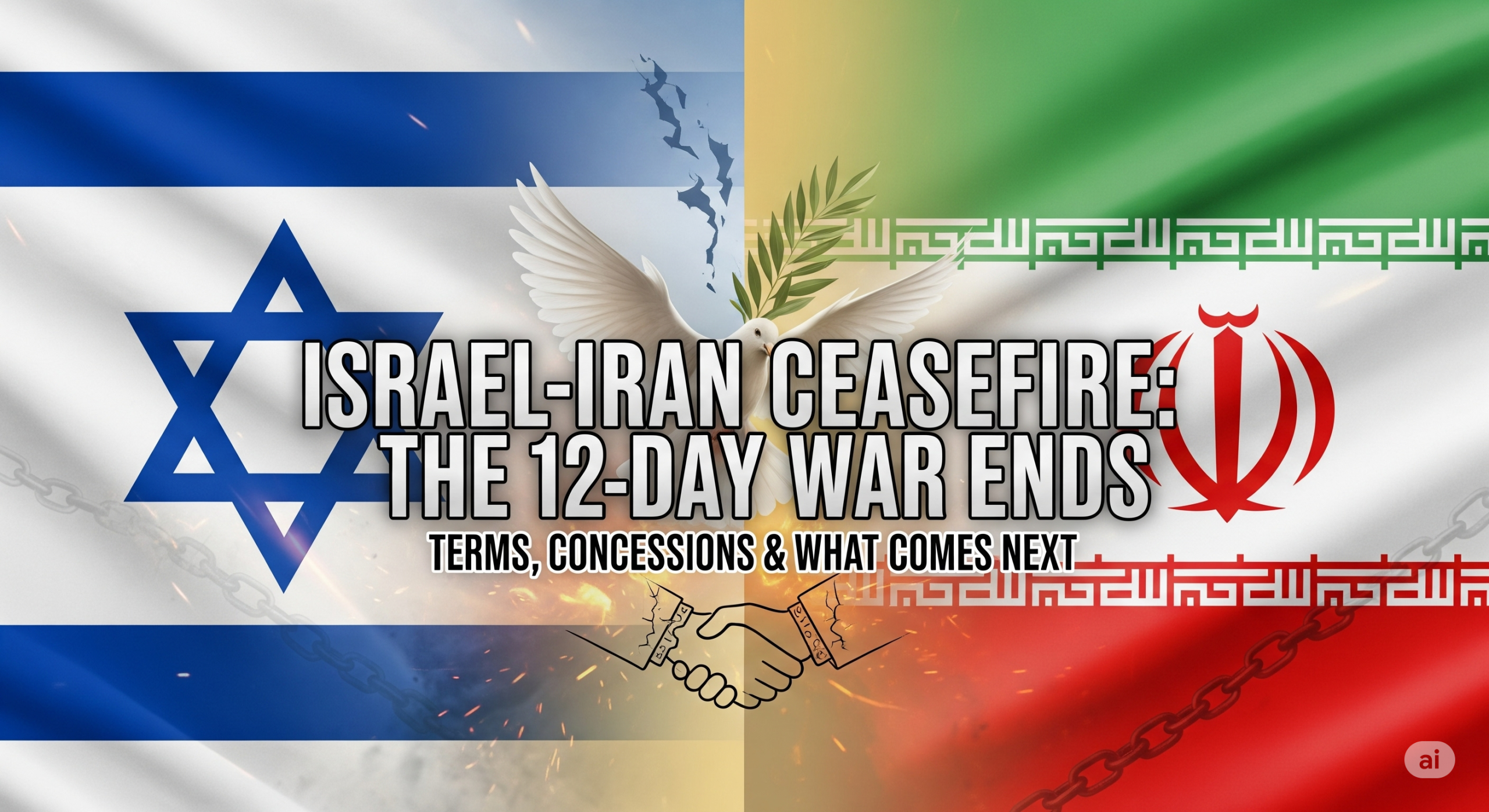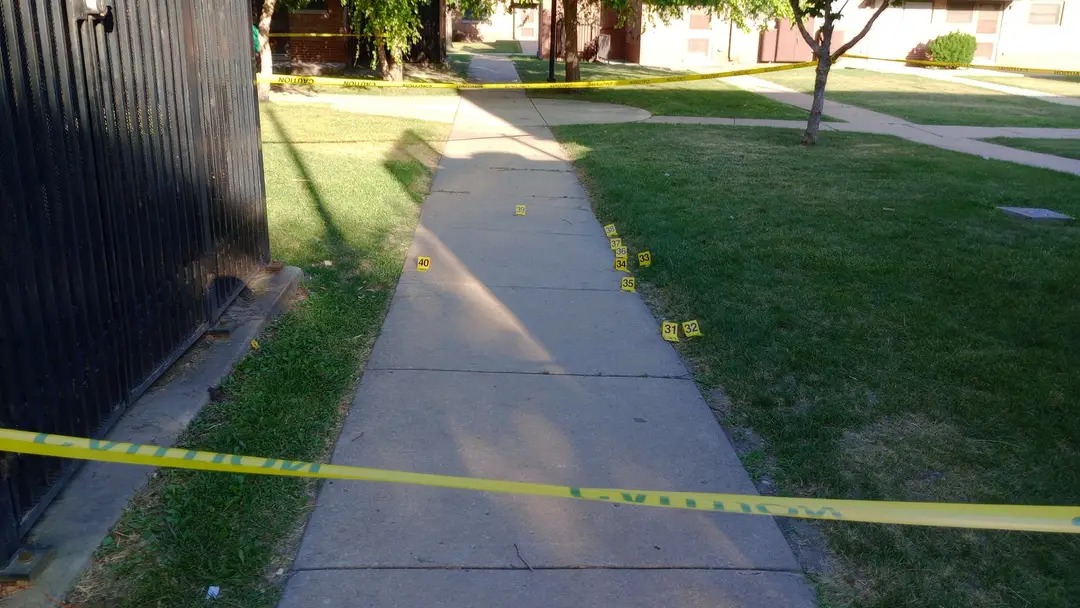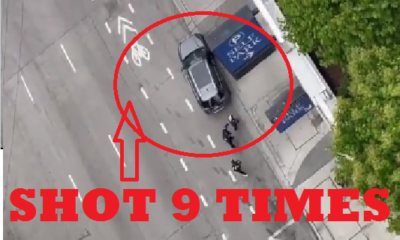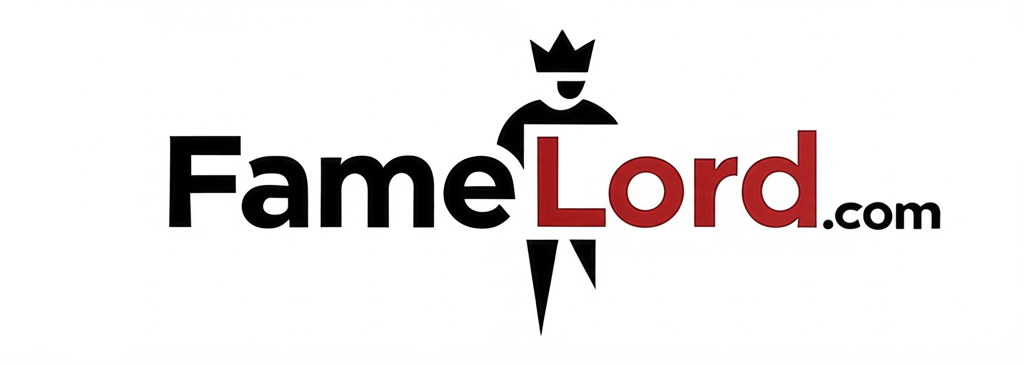Editorials
The Israel-Iran Ceasefire Agreement: Potential Terms and How Trump Did It!!…FIND OUT!!

Trump could have leveraged his close relationship with Netanyahu to privately urge Israel to avoid prolonged war, possibly offering military assurances in exchange for de-escalation. To reach Iran, he might have used backchannel mediators like Oman or Qatar, capitalizing on his Gulf business connections to pass messages discreetly. His proposed 24-hour staggered ceasefire—where Iran halts fire first, followed by Israel—would allow both sides to save face while creating a cooling-off period. Recognizing mutual war fatigue, Trump could have framed the deal as a “dignified exit,” warning Iran that China and Russia wouldn’t intervene if the U.S. fully backed Israel, while reminding Israel that Hamas and Hezbollah remained bigger threats. By announcing the deal on Truth Social, Trump would control the narrative, positioning himself as the indispensable peacemaker and overshadowing current U.S. leadership. Iran might agree to temporary concessions like pausing high-level uranium enrichment, while Israel could secure a halt to missile attacks and U.S. security guarantees. The ceasefire would likely hold short-term due to global pressure, but long-term peace would fail without addressing core issues like Iran’s nuclear program and proxy wars. Ultimately, this scenario would serve Trump’s legacy as a dealmaker—but only delay, not resolve, the deeper conflict.
The Ceasefire Structure
The reported agreement outlines a 24-hour phased ceasefire:
-
First 12 hours: Iran halts all hostilities.
-
Next 12 hours: Israel reciprocates, followed by a full cessation of war.
This staggered approach likely ensures neither side exploits the pause for last-minute attacks. A third-party mediator (possibly the U.S.) may monitor compliance.
2. Key Concessions from Israel
A. Halt to Assassinations & Strikes on Iranian Soil
-
Israel has historically targeted Iranian nuclear scientists and military sites.
-
The deal may require Israel to pause covert operations inside Iran, at least temporarily.
B. No Further Strikes on Iranian Proxies (Hezbollah, Hamas, Houthis)
-
Israel may agree to reduce airstrikes on groups like Hezbollah in Lebanon or IRGC assets in Syria.
-
However, this would likely be conditional on Iran restraining its proxies.
C. Limited Public Commitments on Nuclear Threats
-
Israel might avoid explicit threats against Iran’s nuclear program to prevent escalation.
-
Behind closed doors, however, sabotage (cyberattacks, espionage) could continue.
3. Key Concessions from Iran
A. Freeze on High-Enriched Uranium Production
-
Iran may agree to temporarily cap uranium enrichment at 60% (weapons-grade is 90%).
-
This could be a symbolic gesture to avoid triggering further Israeli or U.S. strikes.
B. Restraint on Proxy Attacks
-
Iran may pledge to limit arms shipments to Hezbollah and Hamas.
-
However, full disarmament is unlikely—Tehran relies on proxies for regional influence.
C. Recognition of Israel’s Right to Exist (Indirectly)
-
While Iran’s regime won’t formally recognize Israel, it may tacitly accept the ceasefire as a de facto acknowledgment.
-
Hardliners will likely reject this, but Supreme Leader Khamenei could justify it as a tactical pause.
4. U.S. & International Involvement
A. U.S. Security Guarantees
-
The Biden or Trump administration (depending on the 2025 election) may offer:
-
Increased military aid to Israel (e.g., advanced missile defense).
-
Sanctions relief for Iran (e.g., oil exports, frozen assets) if compliance holds.
-
B. Role of Regional Players
-
Saudi Arabia & UAE: Could push for a broader Middle East security pact.
-
Russia & China: May act as guarantors for Iran, ensuring no Western-led regime change.
5. Potential Loopholes & Future Risks
A. Proxy War Continues in Shadows
-
Iran may still fund militant groups, just more discreetly.
-
Israel could resume targeted killings if it detects nuclear advancements.
B. Short-Term Truce, Not Lasting Peace
-
Without addressing core issues (nuclear program, Palestinian conflict, regional hegemony), tensions will resurface.
C. Domestic Backlash in Both Nations
-
In Israel: Far-right ministers (e.g., Ben-Gvir) may reject concessions.
-
In Iran: Hardliners could accuse the government of weakness.
Conclusion: A Fragile, Temporary Peace
This ceasefire is likely a tactical pause, not a long-term solution. Both nations avoid all-out war but retain their strategic goals:
-
Israel maintains military dominance.
-
Iran keeps its nuclear latency and proxy network.
The real test will be whether this truce evolves into broader diplomacy—or becomes merely an intermission before the next conflict.
What’s Next?
-
Watch for UN Security Council resolutions formalizing the deal.
-
Monitor Iran’s uranium enrichment levels in coming months.
-
Observe whether Hezbollah/Hamas attacks decline or continue under the radar.
For now, the world breathes a sigh of relief but the underlying tensions remain as volatile as ever.
Editorials
Mass Shooting in Chicago’s Altgeld Gardens Leaves Four Injured, Allegedly Retaliation for Mello Buckzz!!

Chicago, IL – July 3, 2025 – A mass shooting in the Altgeld Gardens neighborhood on Chicago’s South Side, that many in the streets have called a retaliation for the Mass Shooting earlier at rapper Mello Buckzz Album release party has left four people wounded in the early hours of Wednesday morning, marking another violent incident in a city grappling with gun violence.
Details of the Shooting
According to Chicago police, the shooting occurred around 3:17 a.m. in the 600 block of East 133rd Street. A group was gathered outside when unknown assailants opened fire, striking four individuals.
The victims include:
-
A 21-year-old man, shot in the arm and thigh, transported to the University of Chicago Hospital in critical condition.
-
A 31-year-old man, suffering multiple gunshot wounds, taken to Christ Hospital in critical condition.
-
A 29-year-old woman, shot in the arm, who self-transported to Christ Hospital in stable condition.
-
A 29-year-old man, shot in the shoulder, who initially went to Roseland Hospital before being transferred to the University of Chicago Hospital in serious but stable condition.
No suspects have been identified, and Area Two detectives are investigating the circumstances surrounding the attack.
Community Reactions
The shooting has sparked outrage and frustration among residents, with many questioning the effectiveness of crime reduction efforts.
-
Suzanne Etsch commented, *”So in a 24-hour period, at least 22 people shot. Both were mass shootings. Can’t wait to see the total Monday morning.”*
-
Courtney Faull-Basile questioned the narrative on gun violence, asking, “Crime is down, mass shootings are up. Why aren’t we worried about the mass shooters’ mental health or access to guns this time?”
Others, like Ricky Moore, called for unity, saying, “We have to start fasting and pray so our people will stop all the hate towards one another.”
Broader Context of Chicago Violence
This incident follows a troubling trend of mass shootings in Chicago, despite official claims of declining crime rates. Just last month, a similar attack in another South Side neighborhood left multiple victims wounded.
Critics, including Lee Kirk, blamed political leadership, referring to the city as “Brandon’s Chicago,” a likely reference to Mayor Brandon Johnson. Meanwhile, Marc Sims noted that most violent crimes occur within interconnected networks rather than as random acts.
As investigations continue, Chicago residents brace for what could be another violent holiday weekend.
-

 Entertainment3 years ago
Entertainment3 years agoIs Frankie Lapenna Butt Real? Find About About Frankie Lap!!
-

 Entertainment5 years ago
Entertainment5 years agoLil Reese shot in downtown Chicago! Watch The Crime Scene CCTV Video!!
-

 Entertainment5 years ago
Entertainment5 years agoRapper Pooh Shiesty Caught On Video With A Trans Woman! Is He Gay?
-

 Entertainment4 years ago
Entertainment4 years agoWhat Happened To Cody Lane?
-

 Entertainment5 years ago
Entertainment5 years agoPastor Claudia Jaramillo: Redefining Leadership and Womanhood on the Pulpit
-

 Entertainment5 years ago
Entertainment5 years agoCorinna Kopf Photos Hours After She Joined!! Who is Corinna Kopf?






![Kodak Black - Last Day In [Video]](https://famelord.com/wp-content/uploads/2021/06/Screenshot-178-80x80.png)